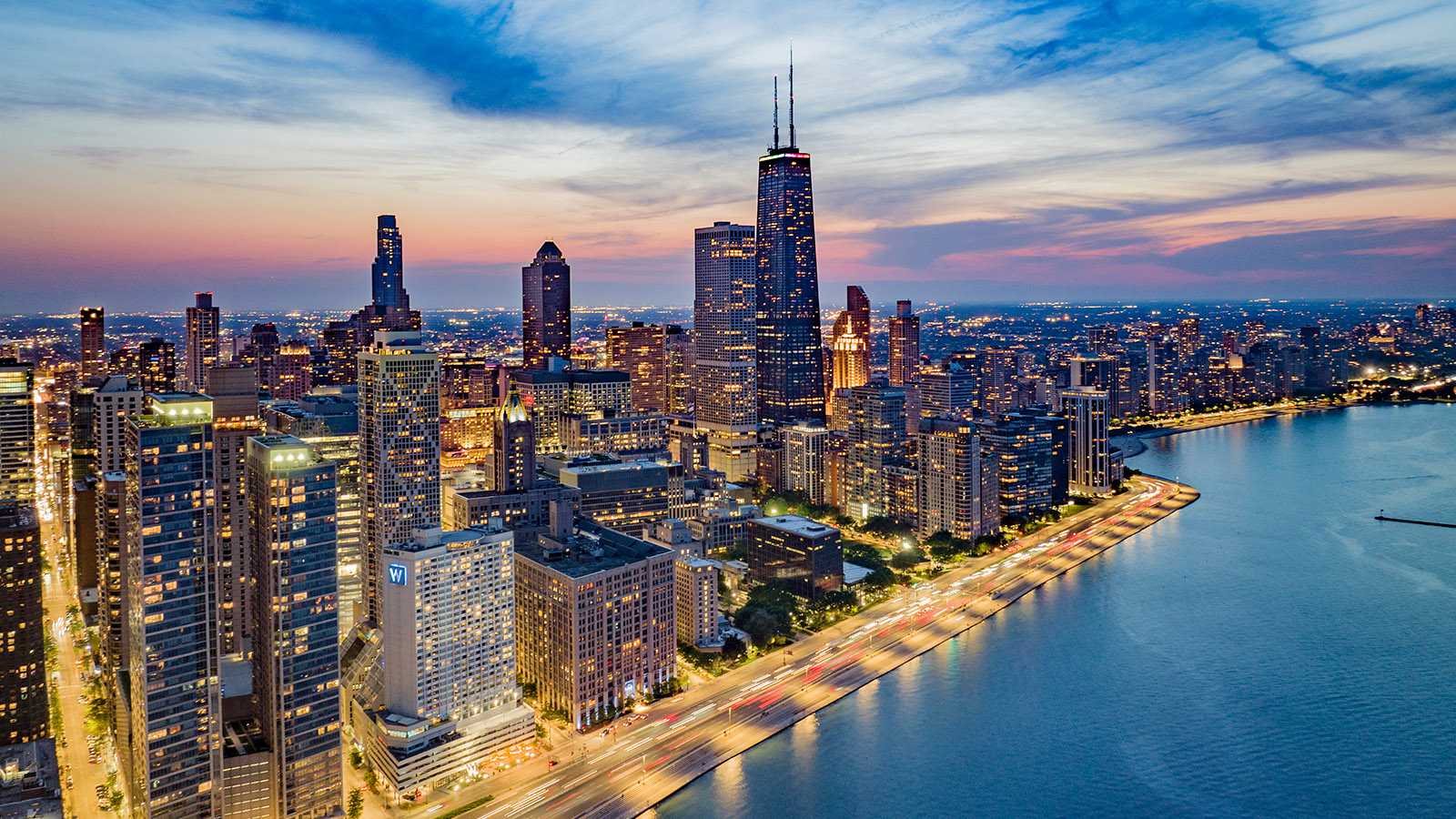
Chicago, Illinois
Bike Network Evolution
City RatingOut of a Possible Score of 100
Overall City Ranking12th Percentile
Rank in the U.S.
Rank in the State
With a City Ratings score of 9 out of 100, Chicago has a lot of work to do to improve its low-stress bike network. Thankfully, Chicago’s Active Transportation Alliance is dedicated to implementing projects and policies that improve biking across the city.
Two key projects, the 103rd and 130th Street Side Paths Project and the Pulaski Road Project, will close critical gaps in the city’s bike network. All infrastructure projects in Chicago are funded through the city’s periodic capital improvement plan, and with funding being one of the most important pieces to getting bike projects built, PeopleForBikes is helping the Active Transportation Alliance engage with city leaders to allocate more funding to local bike projects. PeopleForBikes is also supporting other Active Transportation Alliance initiatives critical to improving bicycling in Chicago: lowering default speed limits and implementing a Complete Streets mandate. All together, these strategies will help raise Chicago’s City Ratings score and make it safer and easier to ride a bike citywide.
Priority Projects
103rd and 130th Street Side Paths
Located in the city’s Far South Side, these paths look to improve connectivity to Chicago’s Big Marsh Bike Park, a superb all-ages recreational facility. Unfortunately, safe access to the park is currently nearly impossible. By better connecting nearby communities, more residents will be able to benefit from the park, which is currently in the process of raising funds to add eight new mountain bike trails.
Learn MorePulaski Road Project
Pulaski Road is one of Chicago’s deadliest streets. Five fatal crashes in less than a year spurred a local neighborhood group, the Southwest Collective, to work with the Active Transportation Alliance to make Pulaski Road safer for all road users. PeopleForBikes is supporting the effort with the goal of developing new infrastructure that will slow traffic and protect people walking and biking from vehicular traffic.
Learn More